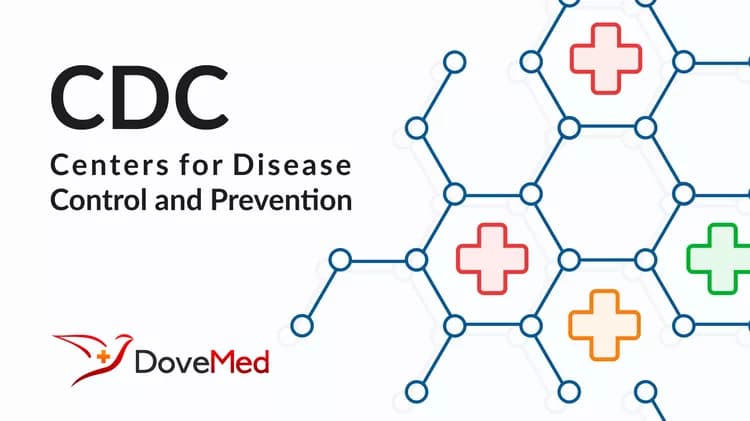
Births to Youngest Teens at Lowest Levels in Almost 60 Years
Births to Youngest Teens at Lowest Levels
in Almost 60 Years
The birth rate among young adolescents aged 10 to 14 has fallen to the lowest level since 1946 according to a report released today by the Centers for Disease Control and Prevention (CDC).
“We are encouraged by our continued progress in reducing births to teens of all ages, but we’re particularly pleased to make this kind of progress in such a young and vulnerable group,” said CDC Director Dr. Julie Gerberding.
This report, Births to 10 to 14 Year-Old Mothers, 1990-2002: Trends and Health Outcomes, is the first ever analysis of births to this group of very young mothers, and was prepared by the CDC’s National Center for Health Statistics.
Between 1990 and 2002 almost 137,000 of these young mothers delivered a live birth. This number has declined steadily from a peak of 12,901 in 1994, to the current low of 7,315. If the 1990 rate had held through 2002, there would have been 34,336 additional births to the youngest teens.
The 38 percent decline in the number of births occurred despite the 16 percent rise in the female population aged 10 to 14 years.
About two-fifths of the pregnancies among 10-14 year olds in 2000 ended in a live birth, two-fifths ended in induced abortion, and about one in six ended in a fetal loss. These proportions have been fairly stable since national pregnancy estimates began in 1976.
In 2002, the birth rate per 1,000 females aged 10-14 years was 0.7 live births, one-half that of 1990 (1.4 per 1,000) and the lowest level since 1946 (0.7).
The 2002 rates were highest among non-Hispanic black (1.9 per 1,000) and Hispanic adolescents (1.4 per 1,000). Though this represents a significant decrease from 1990 rates for non-Hispanic blacks (5.0) and Hispanics (2.4) their rates remained consistently higher than for other groups.
The rates for Asian or Pacific Islander and non-Hispanic white young teens continued to be the lowest, 0.3 and 0.2 per 1,000, respectively. The rate for Asian or Pacific Islander young teens reflected a decrease from their rate of 0.7 per 1,000 in 1990 while the rate for non-Hispanic white young teenagers decreased from 0.5 pre 1,000.
Across the U.S., birth rates to the youngest teenagers in 2000-2002 ranged from the national low of 0.2 per thousand in Maine to a high of 2.0 in Mississippi and the District of Columbia.
Births to very young mothers are associated with increased health risks to the mother. The report documents that these mothers:
Had the lowest levels of timely prenatal care (47.1 percent) in the first trimester, in contrast to the overall rate of 83.3 percent.
Were more likely to receive late or no prenatal care (16.1 percent) as compared to an overall rate of 3.8 percent.
Were at a higher risk for pregnancy-associated hypertension (5.3 percent) and eclampsia (0.7 percent). Their rate of pregnancy-associated hypertension was over 40 percent higher than that experienced by all mothers (3.7 percent) and their rate of eclampsia was over twice as high as the overall rate (0.3 percent).
Health risks were not limited to the mother, however. The report documents that infants of mothers aged 10-14:
Were more likely to be born preterm – before 37 weeks gestation – (21.3 percent) than the overall rate of 10.3 percent and their rate was 33 percent higher than the rate for infants of mothers aged 45 and older (16.0 percent), the next highest risk group.
Were more likely to be born very preterm – before 32 weeks gestation – (5.3 percent), a rate more than triple the overall rate of 1.6 percent and over twice the rate experienced by mothers aged 45 and older (2.6 percent).
Were more likely to be born with low birthweight. Their rate of low birthweight for single births (12.6 percent) was the highest for any age group. It was more than twice the overall rate of 6.1 percent and 27 percent higher than the rate for mothers aged 45 and older (9.9 percent).
Were more than three times as likely to die during their first year (15.4 per 1000) than the overall rate of 6.1 per 1000 and at a rate that was two to three times higher than that for infants of mothers aged 20 to 44 years.
The report, Births to 10 to 14 Year-Old mothers, 1990-2002: Trends and Health Outcomes is available at www.cdc.gov/nchs.
CDC is concerned about the health of women before, during and after pregnancy. The Reproductive Health Atlas is an interactive Web-based service providing trend data on important reproductive health indicators at the national, regional, state and local levels and can be accessed at www.cdc.gov/reproductivehealth/GISAtlas/.
Related Articles
Test Your Knowledge
Asked by users
Related Centers
Related Specialties
Related Physicians
Related Procedures
Related Resources
Join DoveHubs
and connect with fellow professionals

0 Comments
Please log in to post a comment.